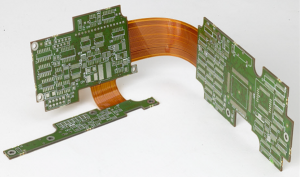As the name implies, 8 layer rigid-flex PCBs are manufactured with 8 conductive copper layers. If these copper layers are left unprotected, they started deteriorating leaving PCBs useless. Hence, in order to withstand the test of time, PCB manufacturers use reliable surface finishes to expand the service period of these crucial components. Amongst the several surface finishing methods available, the two most commonly used methods are briefly discussed in the blog.
Understanding HASL and OSP
(HASL) Hot Air Solder Leveling and OSP (Organic Solderability Preservative) are the widely used surface finishing methods available for coating 8 layer rigid-flex. Both these methods comprehensively protect the copper circuitry from the aggressive industrial environments. Also, these surface finishes provide a solderable surface when assembling various minute components in the board.
HASL – In this method, the 8 layer rigid-flex PCB boards are immersed in a molten alloy of tin and lead. Once the board is dipped and taken back from the molten solder, the excess solder is removed using air knives. The resulting is a very thin layer of solder on the surface of the board, which is capable of protecting the underlying components of the board. This method is popular due to several advantages such as low cost, ease of application and reworking, good bond strength, and long shelf life.
OSP – When compared to several other surface finishing methods, OSP is considered to be the most environment friendly coating method. In this surface finishing process, water-soluble surface treatment agents are used to provide a protective layer of coating on the surface of the rigid-flex. This organometallic layer protects the copper layers from corrosion and other adverse environmental conditions. The advantages associated with this method include; cost-effectiveness, simple process, good solder mask integrity, and flat finish.
Besides these two commonly used methods, PCB manufacturers also use immersion gold, immersion silver, immersion tin, and Electroless Nickel Immersion Gold (ENIG) to provide enhanced protection to copper layers and components. The type of surface finish is selected after analyzing the assembly methods, components used, and typical application areas.


